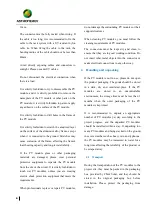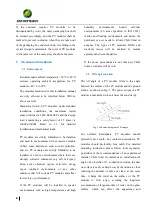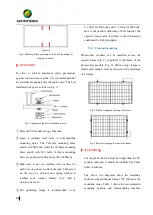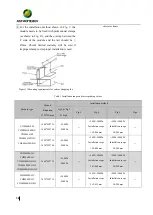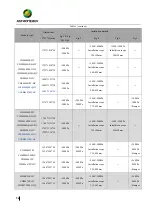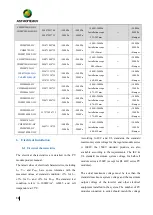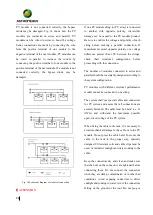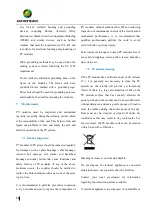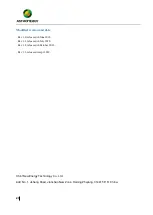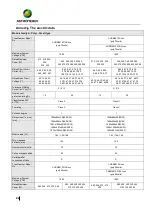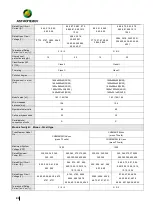
8
If the customer requires PV modules to be
distinguished by color, the outer packaging box shall
be marked accordingly, and the PV modules shall be
marked to prevent confusion when they are taken out
of the packaging box and stacked up. According to the
system design requirements, the color of PV modules
in the same row or the same array should be the same.
5
Mechanical installation
5.1
Environment
Recommended ambient temperature: -20°C to 50°C;
extreme operating ambient temperature for PV
modules: -40 °C to 85°C.
The modules mentioned in this installation manual
are only allowed to be installed below 2000 m
above sea level.
Mechanical load on PV modules: under standard
installation conditions, the maximum tested
snow/wind load is 5400 Pa/2400 Pa and the design
load (considering a safety factor of 1.5 times) is
3600Pa/1600Pa. Refer to 5.3 for detailed
installation and mechanical loads.
PV modules are strictly forbidden to be installed
and used in environments with excessive amounts
of hail, snow, hurricanes, sand, soot, air pollution,
and etc. PV modules are strictly forbidden to be
installed or used in environments where there are
strongly corrosive substances (e.g. salt, salt spray,
brine, active chemical vapors, acid rain, strong
vapor confined environments or any other
substance that will corrode PV modules and affect
their safety or performance).
If the PV modules will be installed in special
environments such as high temperature and high
humidity
environments,
humid
salt-mist
environments (C3+areas specified in ISO 9223),
marine and floating environments and farms, the
purchaser or user needs to inform Chint Solar in
advance. The types of PV modules, BOM, and
warranty issues will be decided by mutual
agreement between the parties.
If the above precautions are not observed, Chint
Solar’s warranty will be void.
5.2
Tilt angle selection
The tilt angle of a PV module refers to the angle
between the surface of the PV module and the ground
surface, as shown in Fig. 1. The power output of a PV
module is maximized. when it faces the sun directly.
Fig. 1 Schematic diagram of tilt angle
For northern hemisphere, PV modules should
preferably face south. For southern hemisphere, PV
modules should preferably face north. For detailed
mounting inclination, please follow local regulatory
guidelines or the recommendations of an experienced
installer. Chint Solar recommends an installation tilt
angle of no less than 10°, so that when it rains, the dust
on surface is easily carried away by the rainwater, thus
reducing the number of times of clean; at the same
time, it helps the water on the surface of the PV
module to flow away, avoiding the long-term
accumulation of large amounts of water on the glass
surface, which can affect the appearance and






